My Victorian black wool dress is completely sewn by hand: it took me 28 hours to hand-sew the dress! I used thin 100% wool broadcloth and the dress is partly lined with cotton fabric. And even if the Victorian dress is black, it’s not a mourning dress! A dress like this would’ve been worn as expensive but serviceable everyday dress in the Victorian era.
1850s-Style Dress
This style of dress was worn in the pre-crinoline era in the early 1850s. I’m wearing the dress only over petticoats not over a cage crinoline which became popular after 1856. Here I’m wearing the Victorian black wool dress over my four short cotton petticoats and my ruffled cotton petticoat.
The Pattern
I used my usual self-drafted Victorian bodice pattern which is based on antique 1850s bodice patterns, such as this free Victorian bodice pattern from 1856. My dress has sloped shoulder seams and princess seams at the back – all typical for the early Victorian era. But unlike my other Victorian dresses, this Victorian dress has long sleeves instead of the popular Victorian pagoda sleeves.
Related: Victorian Sheer White Muslin Dress With Pagoda Sleeves
Hand-Sewing
My Victorian black wool dress is historically accurate because it’s completely hand-sewn. Early Victorian dress were always sewn by hand. All seams – the visible as well as the hidden seams are hand-sewn! It took me 28 hours from start to finish: 11 hours for the skirt and 17 hours for the bodice. Yes, I measured the time because I was curious how long it took back then to sew a dress entirely by hand!
Related: Victorian Striped Cotton Dress
Sewing Details
The Victorian dress is closed with hooks and eyes at the center front. I lined the bodice with white cotton fabric because Victorian bodices were usually lined with glazed cotton fabric. The bodice is boned with synthetic whalebone boning at the center front. Even though bodices were always worn over a corset in the Victorian era, they were usually still boned!
The bodice as well as the lining is cut on the bias. And as is typical of early Victorian dresses, the bodice and skirt are separate.
The skirt is 3m wide at the hem and is gathered with cartridge pleats into the waistband.
Related: How To Sew Cartridge Pleats
Black Wool Fabric
I used 4m thin black all-wool broadcloth for my Victorian dress. You might think that all black wool dresses were worn for mourning in the Victorian era. But this isn’t true: Wool is and was an expensive fabric. And black was a safe color that was suitable for many occasions.
So a middle-class Victorian woman would usually wear a black wool dress on dressy occasions, such as in the afternoon or for church. And a Victorian servant would wear a black wool dress only in the afternoon, that is, if she could afford to buy one. Whereas in the morning, she would wear a washable (and cheaper) cotton dress. Back then, wool dresses were only brushed and never washed! Besides, black wasn’t a very wash-fast and light-fast dye.
‘The correct dress for housemaids is, in the morning, a neat, light-coloured print dress, simple cap, and large white apron, with a coarser one to tie over the latter while grates, etc., are being cleaned.
In the afternoon she should change into a black dress, turned-down collar and cuffs of irreproachable whiteness, and muslin cap and apron of rather more elaborate pattern. […] the usual print and black dresses, etc., the maid herself provides.’ (Every Woman’s Encyclopaedia, 1910-2)
My Inspirations
My main inspirations for my Victorian black wool dress were the following antique Victorian paintings: The Housewife by Frederick Walker, the 1856 painting Autumn Leaves by John Everett Milais, the 1865 painting Afternoon Tea by George Dunlop Leslie and the 1855 painting Mary Isabella Grant Knitting a Shawl by Francis Grant.
Related: A Victorian Reaper
Victorian Black Wool Dress Accessories
Here I’m wearing my Victorian black wool dress with my hand-sewn and starched cotton and lace collar and my Edwardian apron – ssh, don’t tell! 😉 And because a Victorian woman always had her head covered, I’m wearing my handmade Victorian Carrickmacross lace cap.
I’m also wearing a hand-printed polka dot silk ribbon bow. Wearing a silk bow at the neck was really popular in the 1850s, like this antique 1850s photograph shows.
As jewelry I’m wearing an antique Victorian gold brooch, my handmade Victorian-style faux pearl earrings, a golden locket from my aunt and a Victorian-style watch, like “Bertha Schlatter The Bride Of The Artist” is wearing in the 1855 painting by Rudolf Koller.
And the Victorian-style chatelaine is also made by me. Chatelaines were popular accessories in the Victorian era because dresses often had no pockets. I used silver wire and silver-colored paper to make my chatelaine.
And I dressed my hair in a simple 1850s hairstyle with a braided bun.
Related: 1850s Braided Hairstyle Tutorial
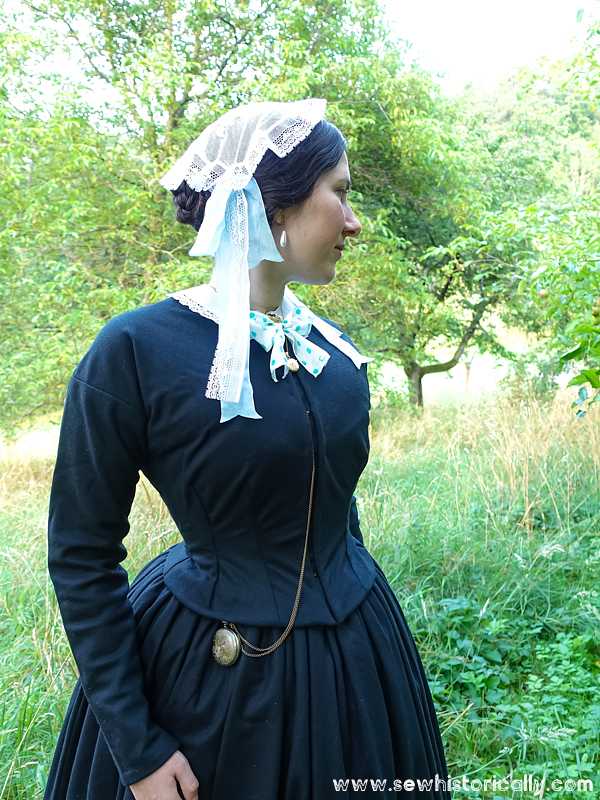
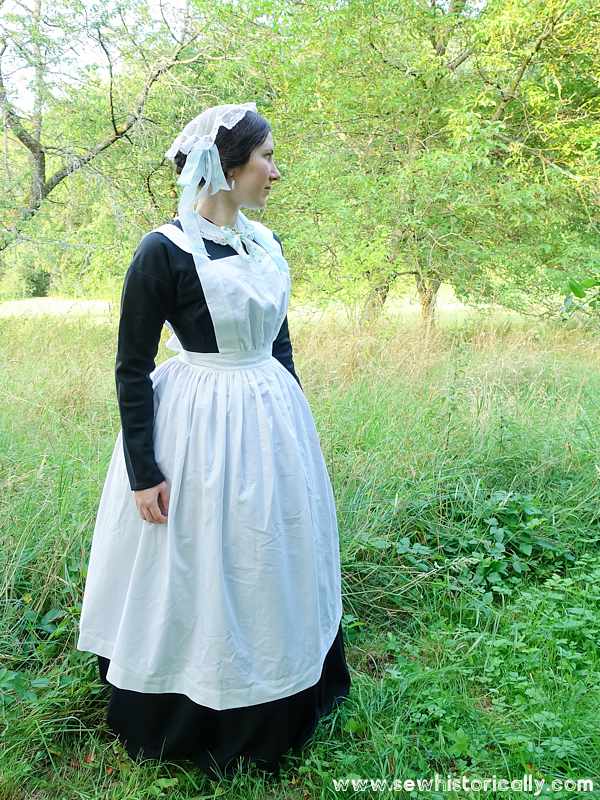
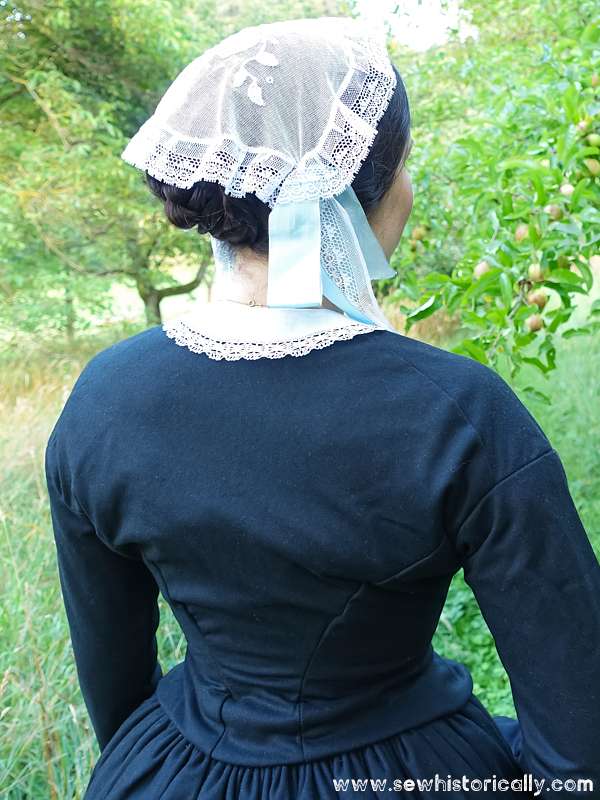
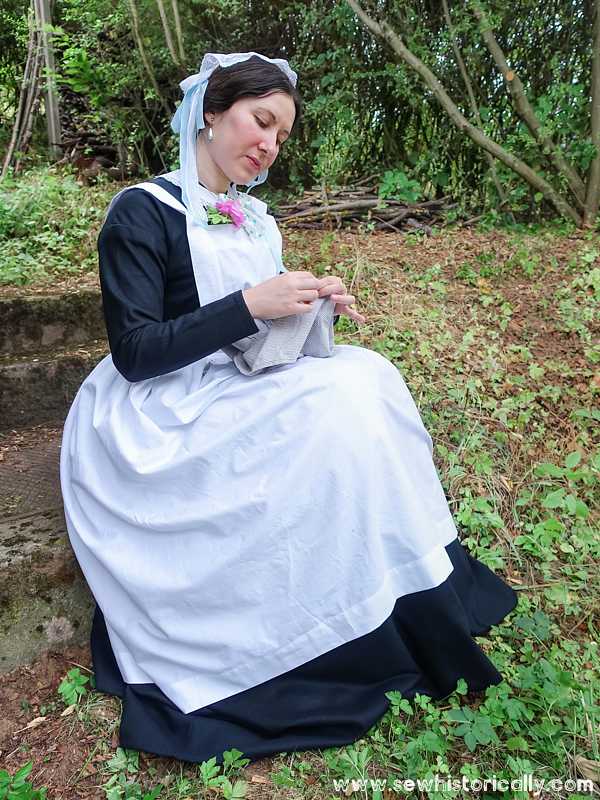
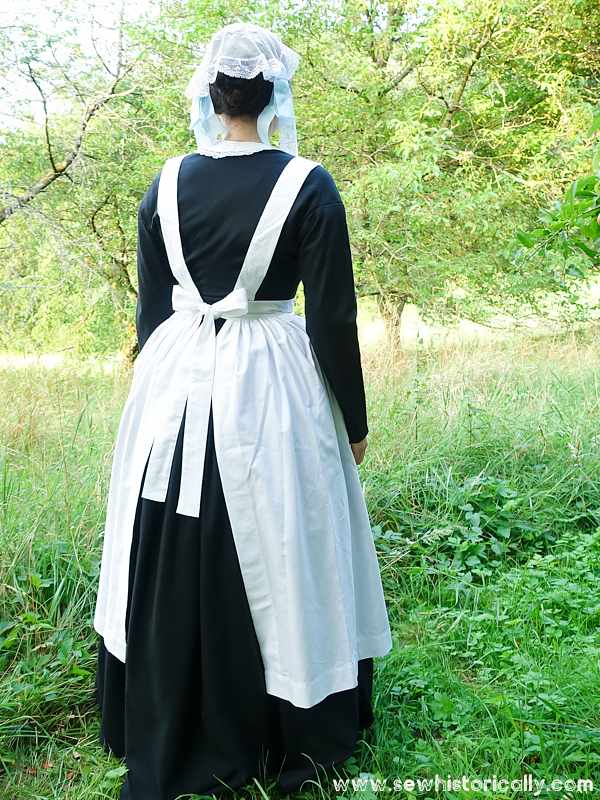
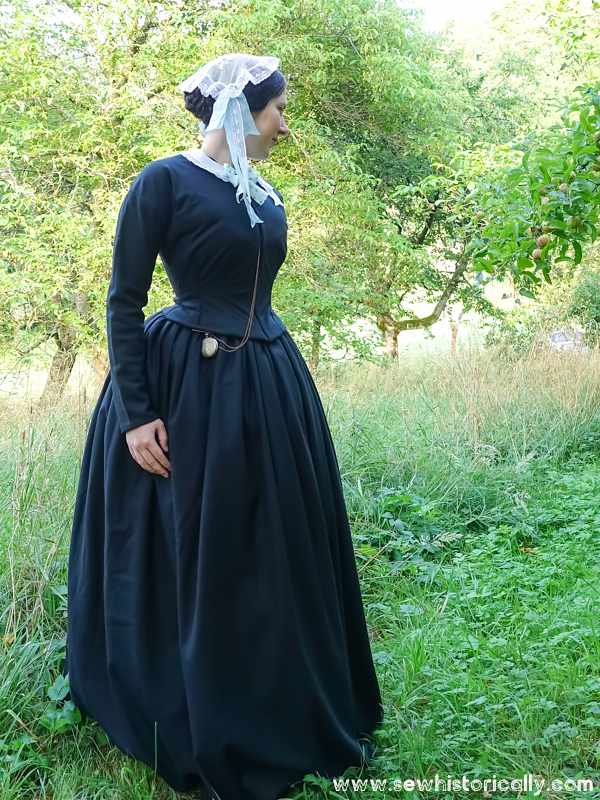
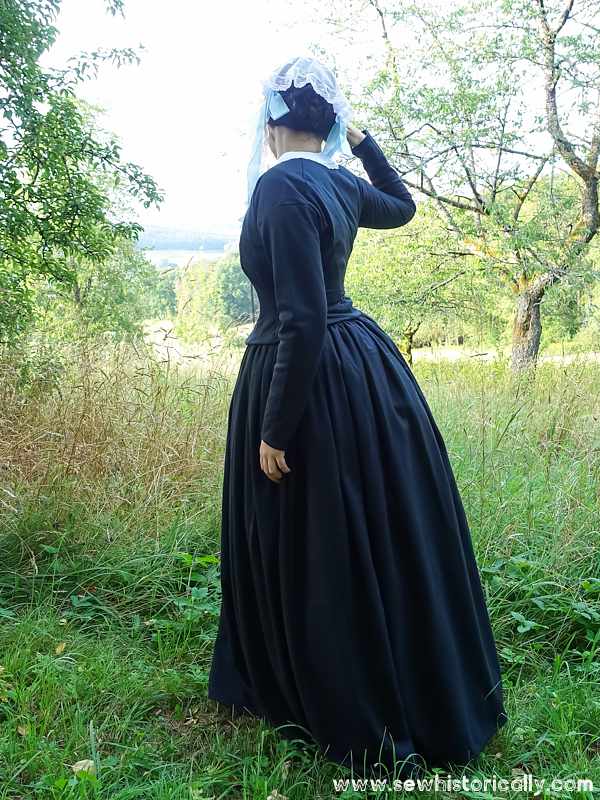
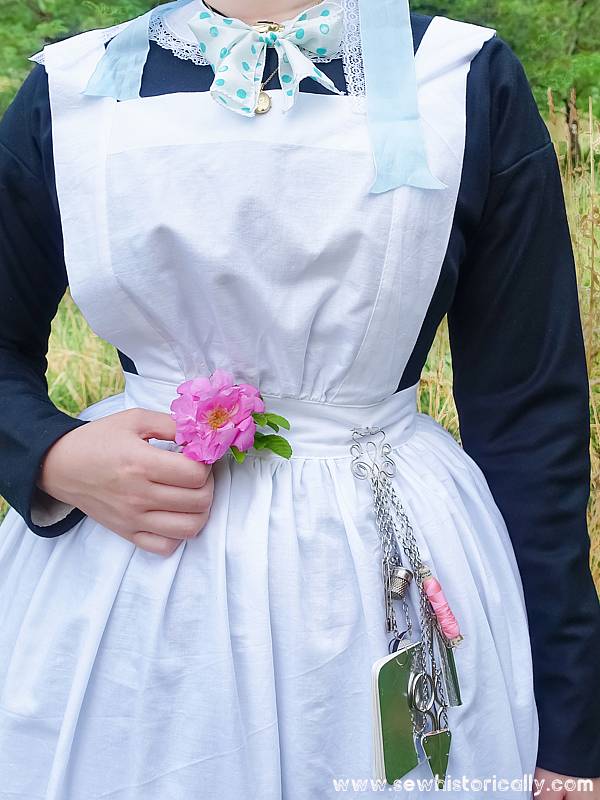
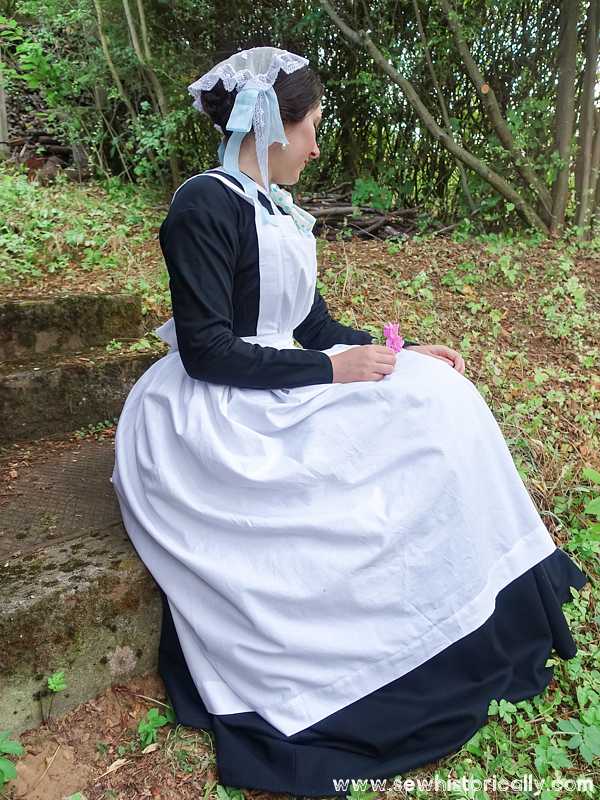
Wow! Your sewing skill is absolutely amazing!
Thank you so much! 😀
Is there anywhere to buy the pattern for this dress or do you have one for sale?
The bodice is based on this free Victorian bodice pattern which I adapted to fit me. And the skirt is just a large rectangle gathered into a waistband. Hope this helps! 🙂